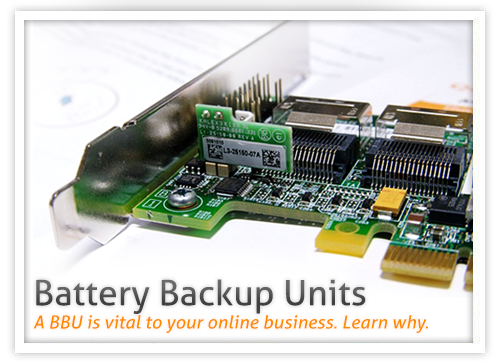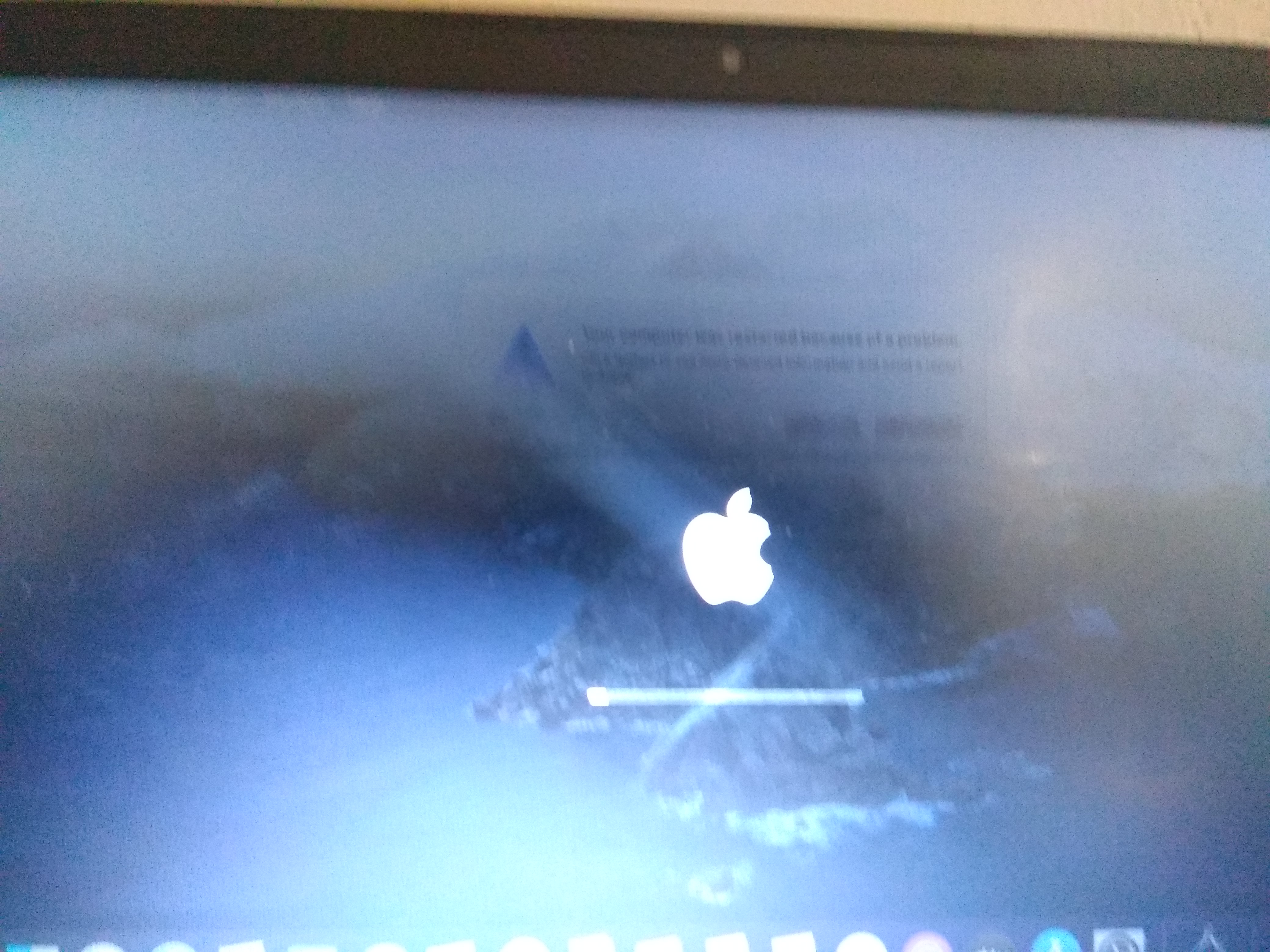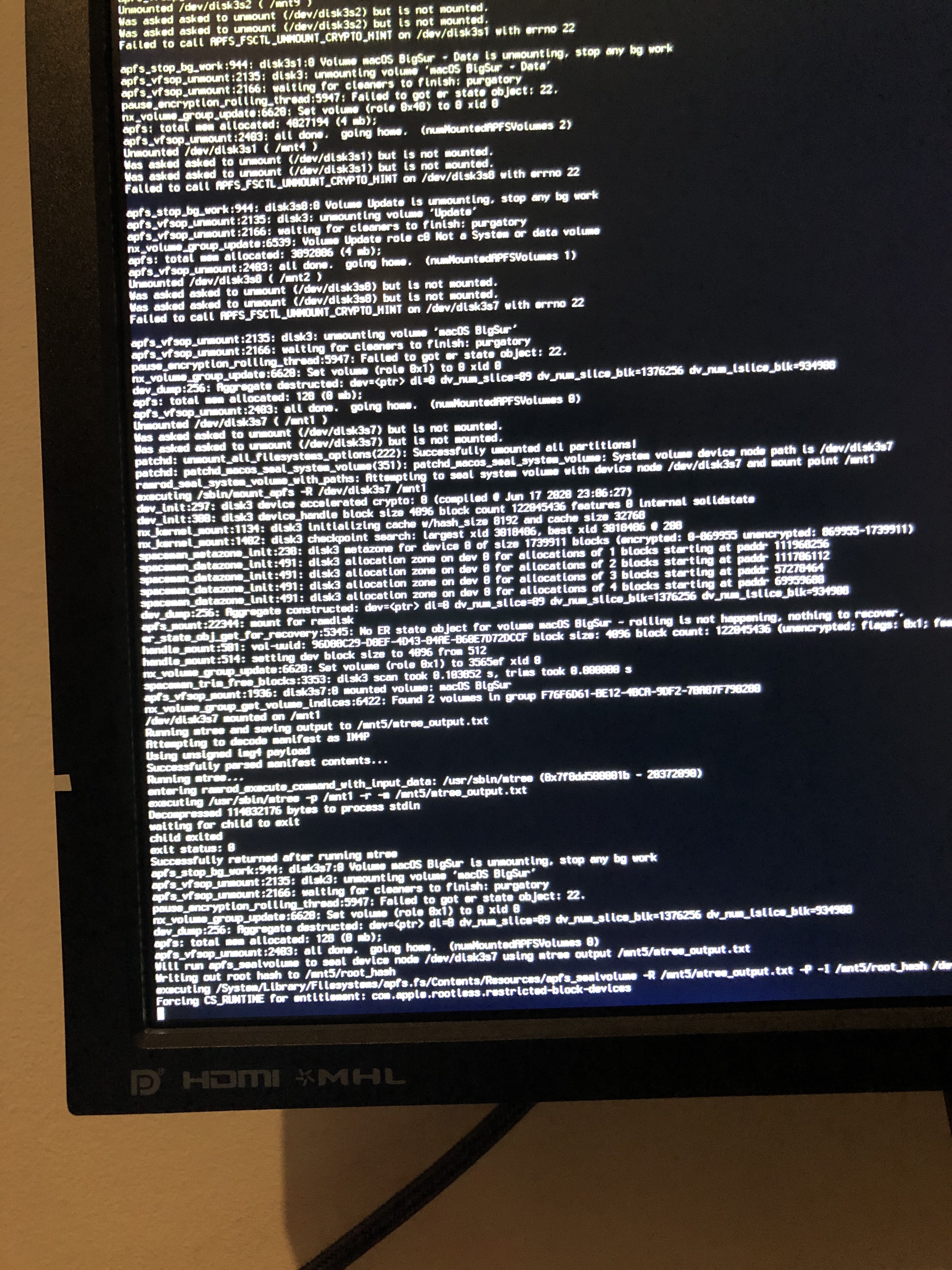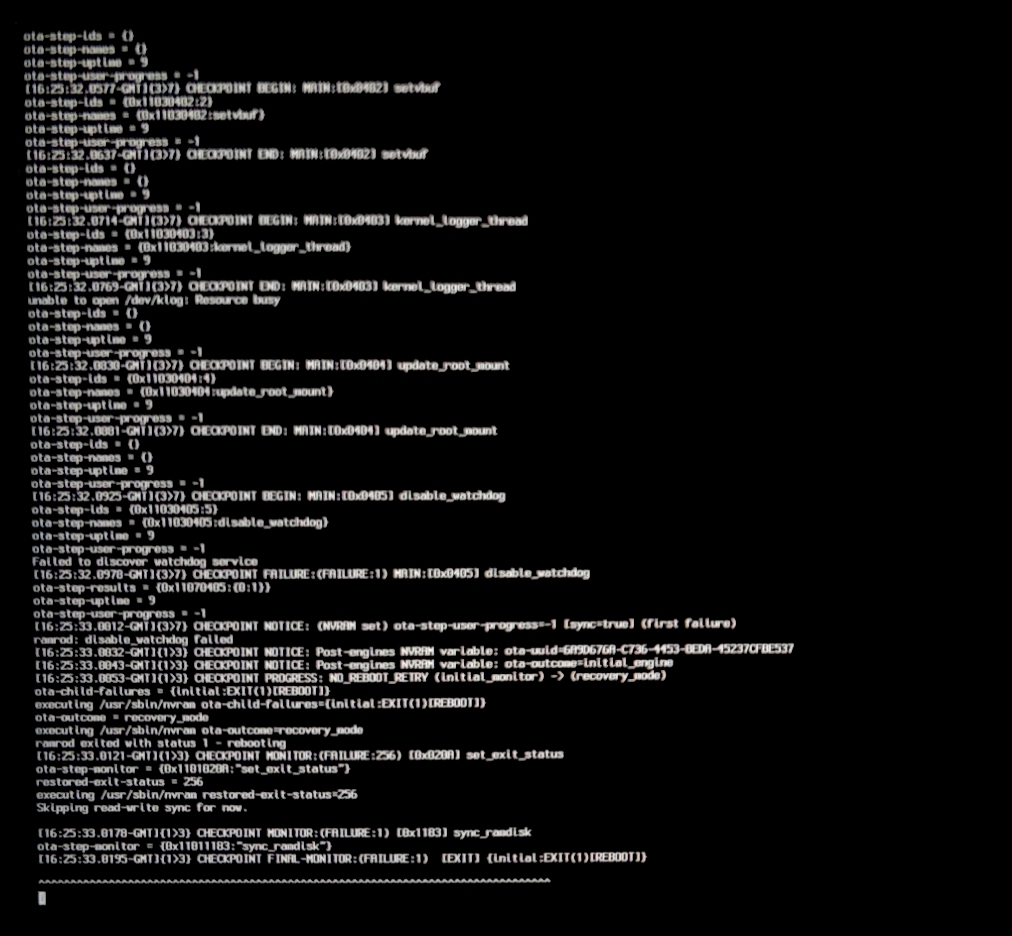juiced requires virtual memory to be enabled что делать
Juiced requires virtual memory to be enabled что делать
Any other way to get around it? ‘Cuz I’m using SSD and 16GB RAM, and for years I’ve turned off Pagefile with no issues
KInda funny just to turn on the page file (and reboot) to play the game and to turn it off again (and reboot) after playing the game.
Any other way to get around it? ‘Cuz I’m using SSD and 16GB RAM, and for years I’ve turned off Pagefile with no issues
KInda funny just to turn on the page file (and reboot) to play the game and to turn it off again (and reboot) after playing the game.
Any other way to get around it? ‘Cuz I’m using SSD and 16GB RAM, and for years I’ve turned off Pagefile with no issues
KInda funny just to turn on the page file (and reboot) to play the game and to turn it off again (and reboot) after playing the game.
Системное администрирование и мониторинг Linux/Windows серверов и видео CDN
Статьи по настройке и администрированию Windows/Linux систем
S.M.A.R.T. (часть 2). Мониторинг BBU RAID контроллеров

Состояние батареи нужно периодически проверять. Для RAID контроллеров этот компонент вообще может отсутствовать, так как его основное предназначение — это держать в кэше данные, которые еще не записались на диск, т.е. сохранение целостности данных при сбое питания (внезапное отключения подачи электричества).
На данный момент, почти все рейд контроллеры поддерживают кэширование данных на уровне контроллера. Т.е. каждый физический диск имеет свой кэш плюс кэш контроллера. Такой подход повышает производительность системы при сохранение большого количества данных или же при очень высоком уровне отдачи контента конечным пользователям.
Если рейд контроллер умеет кэшировать данные, то на нем можно настроить политику считывания, записи и буферизации данных.
Read Policy: Политика считывания указывает каким образом контроллеру нужно считывать сектора логических устройств при поиске нужной информации.
Про политику записи и буферизации лучше читать в оригинале.
Write Policy: The write policies specify whether the controller sends a write-request completion signal as soon as the data is in the cache or after it has been written to disk.
В этом режиме как только данные попали в кэш — контроллер говорит, что данные уже сохранены. Это повышает производительность но ставит под угрозу целостность данных.
В этом режиме данные попадать в кэш, записываются на дик и только тогда контроллер отвечает, что данные сохранены. Это повышает целостность данных, но уменьшает производительность.
Cache Policy: The Direct I/O and Cache I/O cache policies apply to reads on a specific virtual disk. These settings do not affect the read-ahead policy. The cache policies are as follows:
Все считанные данные буферизируются в кэше.
Данные не буферизируются в кэше.
Теперь перейдем к практике на примере мегарейд контроллера.
Для начала нужно проверить логи:
Если вывелась куча строк типа:
… первым делом проверяем статус BBU установленной тулзой:
Убеждаемся, что проблема есть по параметрам — Battery Replacement required : Yes и Battery State: Failed. Перед паникой и заменой, нужно дополнительно посмотреть параметр Run time to empty: Battery is not being charged. — Это означает, что нужно ее зарядить, так как она еще ни разу не заряжалась и состояние заряда :
Relative State of Charge: 96 %
Absolute State of charge: 5161 %
Значит первым делом нужно попробовать зарядить BBU и если не помогло — проверить все ли правильно подсоединено. Если проблема не решилась — нужно проводить замену.
Можно пользоваться этими шагами для определения и решения проблемы с BBU:
| Num | Type | Description | Indication | Actions |
| 2 | F | Unable to recover cache data from TBBU | A,B | 1 |
| 10 | F | Controller cache discarded due to memory/battery problems | A,B | 1 |
| 11 | F | Unable to recover cache data due to configuration mismatch | A,B,C | 1 |
| 146 | W | Battery voltage low | N/A | 1,2 |
| 162 | W | Current capacity of the battery is below threshold | B | 1,2 |
| 150 | F | Battery needs replacement — SOH Bad | D | 1,2 |
| 154 | W | Battery relearn timed out | D | 1,2 |
| 161 | W | Battery removed | D | 1,2 |
| 200 | C | Battery/charger problems detected: SOH Bad | D | 1,2 |
| 211 | C | BBU Retention test failed! | G | 1,2 |
| 142 | W | Battery Not Present | N/A | 1,2 |
| 253 | W | Battery requires reconditioning: please initiate a LEARN cycle | N/A | 3 |
| 307 | W | Periodic Battery Relearn is pending. Please initiate manual leam cycle as Automatic leam is not enabled | H | 3 |
| 195 | W | BBU disabled: changing WB to WT | E, F | 4,5 |
| 330 | W | Detected error with the remote battery connector cable | N/A | 6 |
Type:
F= Fatal. W=Warning. C=Critical.
Indication:
A) Sudden power loss or system hang, when BBU is not fully charged and Write Back mode is forcefully enabled
B) The extended power loss to the system has resulted in the BBU being thoroughly discharged before power recovery.
C) The specific virtual drive configuration may have changed, so that previous virtual drive information cannot be recovered from BBU data
D) BBU failure or it is installed or connected incorrectly.
E) BBU not connected or not fully charged.
F) If WB mode was enabled before BBU charge, then it will be automatically re-enabled after the charge
G) BBU not able to keep cache data long enough during system power off.
H) The battery requires a relearn cycle to re-calibrate itself.
Action
1) Check the BBU status to see if the BBU should be charged or replaced.
2) Check the cable, power connection, backplane, SATA/SAS port, and make sure the BBU is installed and connected correctly.
3) Use RAID Web Console 2 or RAID BIOS Console to initiate a battery re-learn cycle.
4) Wait until the BBU is fully charged before rebooting the system.
5) WB can still be used through Bad BBU mode under RAID Web Console 2 but unexpected
power failure may cause data loss.
6) Check if the remote battery connector cable is properly connected and functional.
# Kernel Issues
Issues surrounding from initial booting the macOS installer to right before the install GUI pops up.
# Stuck on [EB|#LOG:EXITBS:START]
This section will be split into 3 parts, so pay close attention:
# Booter Issues
The main culprits to watch for in the Booter section are:
DevirtualiseMmio
SetupVirtualMap
EnableWriteUnprotector
Regarding MATs support, firmwares built against EDK 2018 will support this and many OEMs have even added support all the way back to Skylake laptops. Issue is it’s not always obvious if an OEM has updated the firmware, you can check the OpenCore logs whether yours supports it(See here how to get a log):
# Kernel Patch Issues
This section will be split between Intel and AMD users:
# AMD Users
# Intel Users
# Legacy Intel users
For macOS Big Sur, many firmwares have issues determining the CPU core count and thus will kernel panic too early for screen printing. Via serial, you can see the following panic:
However on certain machines like the HP Compaq DC 7900, the firmware will still panic so we need to force a CPU core count value. Only use the below patch if AvoidRuntimeDefrag didn’t work:
Legacy CPU Core patch
To do this, Add the following patch(replacing the 04 from B8 04 00 00 00 C3 with the amount of CPU threads your hardware supports):
| Key | Type | Value |
|---|---|---|
| Base | String | _acpi_count_enabled_logical_processors |
| Count | Integer | 1 |
| Enabled | Boolean | True |
| Find | Data | |
| Identifier | String | Kernel |
| Limit | Integer | 0 |
| Mask | Data | |
| MaxKernel | String | |
| MinKernel | String | 20.0.0 |
| Replace | Data | B804000000C3 |
| ReplaceMask | Data | |
| Skip | Integer | 0 |
# UEFI Issues
# Stuck on EndRandomSeed
Same issues above, see here for more details: Stuck on [EB|#LOG:EXITBS:START]
# Stuck after selecting macOS partition in OpenCore
Same issues above, see here for more details: Stuck on [EB|#LOG:EXITBS:START]
# Kernel Panic on Invalid frame pointer
Another issue may be that macOS is conflicting with the write protection from CR0 register, to resolve this we have 2 options:
Regarding MATs support, firmwares built against EDK 2018 will support this and many OEMs have even added support all the way back to Skylake laptops. Issue is it’s not always obvious if an OEM has updated the firmware, you can check the OpenCore logs whether yours supports it:
Note: 1 means it supports MATs, while 0 means it does not.
# Stuck on [EB|LD:OFS] Err(0xE) when booting preboot volume
This can happen when the preboot volume isn’t properly updated, to fix this you’ll need to boot into recovery and repair it:
Then finally reboot
This is due to missing outdated Apple Secure Boot manifests present on your preboot volume resulting is a failure to load if you have SecureBootModel set, reason for these files being missing is actually a bug in macOS.
To resolve this you can do one of the following:
To do this via terminal:
This is due to incorrect BIOS settings:
# Stuck on Buffer Too Small
# Stuck on Plist only kext has CFBundleExecutable key
Missing or incorrect Executable path in your config.plist, this should be resolved by re-running ProperTree’s snapshot tool(Cmd/Ctrl+R).
# Stuck on This version of Mac OS X is not supported: Reason Mac.
This error happens when SMBIOS is one no longer supported by that version of macOS, make sure values are set in PlatformInfo->Generic with Automatic enabled. For a full list of supported SMBIOS and their OSes, see here: Choosing the right SMBIOS
# Couldn’t allocate runtime area errors
Well this general area is where a lot of PCI devices are first setup and configured, and is where most booting issues will happen. Other names include:
The main places to check:
Missing EC patch:
IRQ conflict:
PCI allocation issue:
NVMe or SATA issue:
NVRAM Failing:
(opens new window) on how to stop NVRAM write, note that for install you do not need to run the script. Just setup the config.plist
RTC Missing:
Example of what a disabled RTC with no way to enable looks like(note that there is no value to re-enable it like STAS ):
# Stuck at ACPI table loading on B550
If you’re getting stuck at or near ACPI table loading with an AMD B550 or A520 motherboard, add the following SSDT:
# «Waiting for Root Device» or Prohibited Sign error
This is generally seen as a USB or SATA error, couple ways to fix:
# USB Issues
This assumes you’re only booting the installer USB and not macOS itself.
If you’re hitting the 15 port limit, you can temporarily get around this with XhciPortLimit but for long term use, we recommend making a USBmap
Another issue can be that certain firmware won’t pass USB ownership to macOS
Sometimes, if the USB is plugged into a 3.x port, plugging it into a 2.0 port can fix this error.
For AMD’s 15h and 16h CPUs, you may need to add the following:
If XLNCUSBFix still doesn’t work, then try the following:
X299 Users: Enable Above4G Decoding
Missing USB ports in ACPI:
# SATA Issues
On rare occasions(mainly laptops), the SATA controller isn’t officially supported by macOS. To resolve this, we’ll want to do a few things:
Note that you will only experience this issue after installing macOS onto the drive, booting the macOS installer will not error out due to SATA issues.
# Kernel panic with IOPCIFamily on X99
For those running the X99 platform from Intel, please go over the following:
# Stuck on or near IOConsoleUsers: gIOScreenLock. / gIOLockState (3.
This is right before the GPU is properly initialized, verify the following:
# Scrambled Screen on laptops
Enable CSM in your UEFI settings. This may appear as «Boot legacy ROMs» or other legacy setting.
# Black screen after IOConsoleUsers: gIOScreenLock. on Navi
For MSI Navi users, you’ll need to apply the patch mentioned here: Installer not working with 5700XT #901
Note: macOS 11, Big Sur no longer requires this patch for MSI Navi.
# Kernel Panic Cannot perform kext summary
Generally seen as an issue surrounding the prelinked kernel, specifically that macOS is having a hard time interpreting the ones we injected. Verify that:
Note: this error may also look very similar to Kernel Panic on Invalid frame pointer
# Kernel Panic AppleIntelMCEReporter
With macOS Catalina, dual socket support is broken, and a fun fact about AMD firmware is that some boards will actually report multiple socketed CPUs. To fix this, add AppleMCEReporterDisabler
# Kernel Panic AppleIntelCPUPowerManagement
| Comment | String | Force HPET Online |
|---|---|---|
| Enabled | Boolean | YES |
| Count | Number | 0 |
| Limit | Number | 0 |
| Find | Data | A010934F53464C00 |
| Replace | Data | A40A0FA3A3A3A3A3 |
# Kernel Panic AppleACPIPlatform in 10.13
On macOS 10.13, High Sierra the OS is much stricter with ACPI tables, specifically a bug with how headers were handled
# macOS frozen right before login
This is a common example of screwed up TSC, for most system add CpuTscSync
The most common way to see the TSC issue:
| Case 1 | Case 2 |
|---|---|
 |  |
# Keyboard works but trackpad does not
Make sure that VoodooInput is listed before VoodooPS2 and VoodooI2C kexts in your config.plist.
# kextd stall[0]: AppleACPICPU
This is due to either a missing SMC emulator or broken one, make sure of the following:
# Kernel Panic on AppleIntelI210Ethernet
For those running Comet lake motherboards with the I225-V NIC, you may experience a kernel panic on boot due to the I210 kext. To resolve this, make sure you have the correct PciRoot for your Ethernet. This commonly being either:
For those who can to your PciRoot manually, you’ll want to install macOS fully and run the following with gfxutil
This should spit out something like this:
The ending PciRoot(0x0)/Pci(0x1F,0x6) is what you want to add in your config.plist with device-id of F2150000
# Kernel panic on «Wrong CD Clock Frequency» with Icelake laptop
# Kernel panic on «cckprng_int_gen»
This is likely to be 1 of 2 things:
For the latter, ensure you’re only using SSDT-CPUR with B550 and A520. Do not use on X570 or older hardware(ie. B450 or A320)
# Stuck at Forcing CS_RUNTIME for entitlement in Big Sur
This is actually the part at where macOS will seal the system volume, and where it may seem that macOS has gotten stuck. DO NOT RESTART thinking you’re stuck, this will take quite some time to complete.
# Stuck on ramrod (^^^^^^^^^^^^^)
If you get stuck around the ramrod section (specifically, it boots, hits this error, and reboots again back into this, causing a loop), this hints that your SMC emulator is broken. To fix this, you have 2 options:
(opens new window) (you can use the MinKernel / MaxKernel trick mentioned above to restrict FakeSMC to Big Sur and up
And when switching kexts, ensure you don’t have both FakeSMC and VirtualSMC enabled in your config.plist, as this will cause a conflict.
# Virtual Machine Issues
# Reboot on «AppleUSBHostPort::createDevice: failed to create device» on macOS 11.3+
Слишком низкая виртуальная память Windows 10 [Fix]
Что является причиной ошибки Windows 10 Virtual Memory Too Low?
Изначально Windows устанавливает размер файла pagefile.sys в зависимости от объема ОЗУ на вашем компьютере. Допустим, у вас на компьютере физически около 8 ГБ ОЗУ. Теперь размер виртуальной памяти, установленный Windows, будет равен 2 ГБ или 32-разрядной системе и около 4 ГБ в 64-разрядной системе. Когда вы сталкиваетесь с ошибкой Windows 10 Virtual Memory на слишком низком уровне, это означает, что программа, которую вы пытаетесь использовать, требует много ресурсов, которые даже виртуальная память не может обработать.
Как исправить ошибку Windows 10 Virtual Memory Too Low?
1. Расширить виртуальную память
Причина, по которой я очистил причину этой ошибки выше, заключается в предоставлении очевидного решения. Это решение может быть легко устранено путем увеличения размера виртуальной памяти в вашей системе. В следующих шагах мы увеличим размер pagefile.sys , немного изменив настройки, и это поможет вам избавиться от этой проблемы.
Это должно исправить ошибку, связанную с нехваткой памяти в Windows 10. Тот же метод работает для Windows 7, Windows 8 или Windows 8.1, поэтому попробуйте и попробуйте, если вы столкнулись с такой проблемой.
2. Получите больше оперативной памяти
Ну, виртуальная память способна сделать так много. Также имейте в виду, что pagefile.sys использует пространство на жестком диске для создания виртуальной памяти, которая намного медленнее, чем фактическая оперативная память.
3. Отключите приложения и программы, использующие память.
Проблемы с нехваткой памяти также могут быть вызваны некоторыми приложениями и программами, которые просто поглощают память компьютера. Самое быстрое решение, чтобы решить эту проблему, чтобы отключить эти программы. Но сначала вам нужно их идентифицировать.
4.Сканирование компьютера на наличие вредоносных программ и других киберугроз
Вредоносные программы, программное обеспечение для майнинга и другие подобные программы могут также вызвать нагрузку на память ПК. Проблема в том, что в фоновом режиме работают хитрые программы, и вы замечаете их только тогда, когда уже слишком поздно или их последствия стали слишком очевидными.
Используйте антивирус для запуска полной проверки системы. Вы также можете установить специальный инструмент для защиты от вредоносных программ для дополнительного уровня защиты.
Мы также рекомендуем установить анти-криптоминирующий инструмент, который обнаруживает и блокирует майнеры криптовалюты. Эти инструменты используют вычислительную мощность вашего компьютера для майнинга криптовалют без вашего согласия.
Лучшим средством защиты 2018 года считается Bitdefender. После того, как Nr. 1 антивирус, он также является отличным блокировщиком вредоносных программ, а также защищает ваш трафик и просмотр страниц.
5. Восстановите ваш реестр
Вредоносное ПО также может изменить некоторые ключи реестра, что может привести к тому, что ваш компьютер будет вести себя необычно. В этом случае вам необходимо восстановить реестр с помощью специального инструмента, такого как CCleaner или rybbubg, средство проверки системных файлов Microsoft для проверки повреждения системных файлов.
Не забудьте сначала сделать резервную копию вашего реестра на случай, если что-то пойдет не так, чтобы вы могли восстановить работающую версию ОС. Вот как запустить сканирование SFC:
1. Перейдите в Пуск>, введите cmd >, щелкните правой кнопкой мыши Командную строку> выберите Запуск от имени администратора.
2. Теперь введите команду sfc/scannow
3. Дождитесь завершения процесса сканирования и перезагрузите компьютер. Все поврежденные файлы будут заменены при перезагрузке.
6. Проверьте свой диск на наличие ошибок
Windows 10 позволяет проверять диск на наличие ошибок с помощью командной строки.
7. Очистите ваши временные файлы и папки
Когда вы пользуетесь своим компьютером или просматриваете Интернет, ваш компьютер накапливает различные ненужные файлы, так называемые ненужные файлы. Они могут повлиять на скорость обработки, память и скорость отклика вашего компьютера. Самый простой и быстрый способ удалить ваши временные файлы и папки – использовать очистку диска.
1. Перейдите в Пуск> введите Очистка диска> запустите инструмент
2. Выберите диск, который вы хотите почистить> инструмент скажет вам, сколько места вы можете освободить
Таким образом, даже после выполнения описанных выше действий вы столкнетесь с той же ошибкой, тогда вам пора купить больше оперативной памяти, и это наверняка решит проблему для вас!





